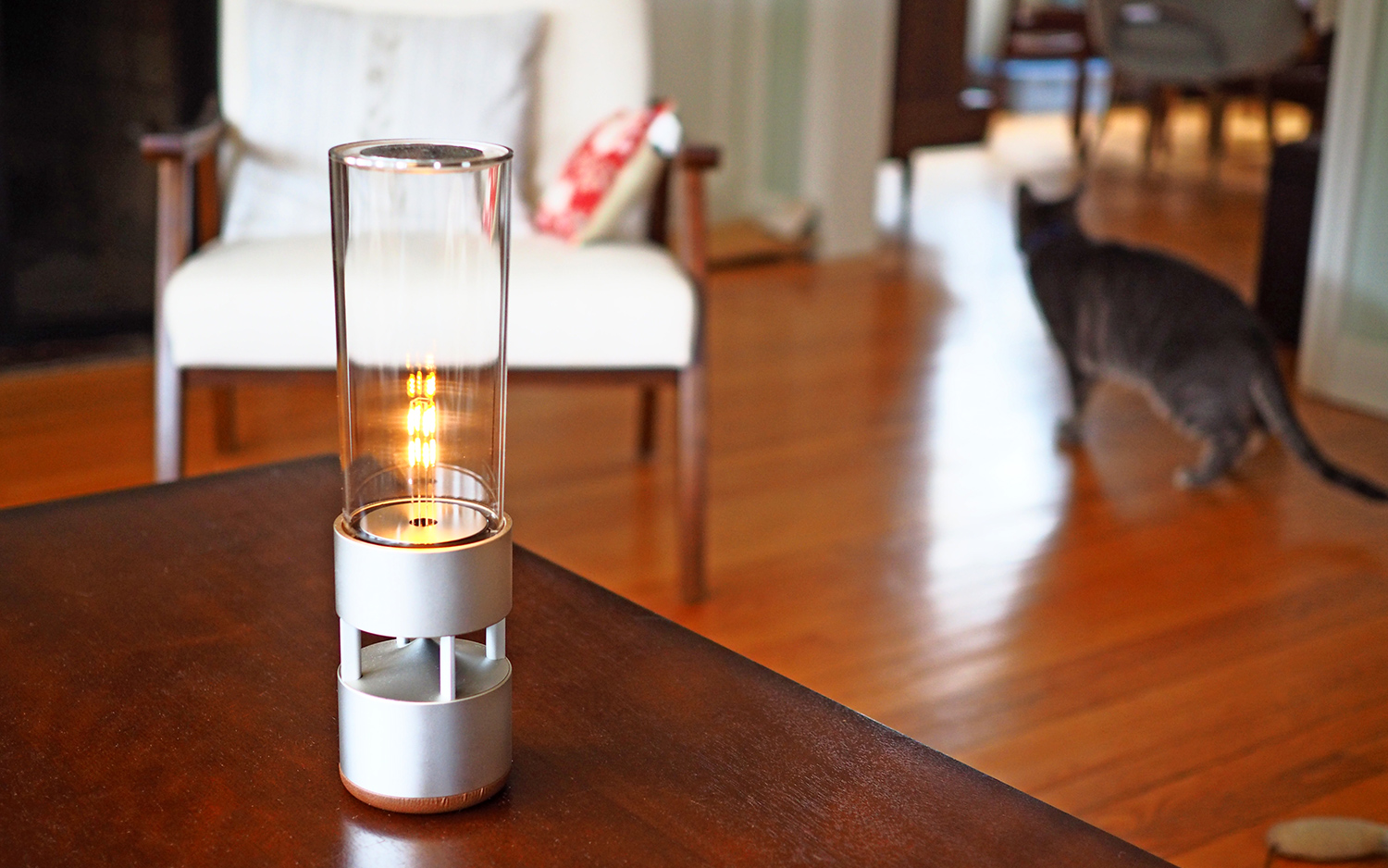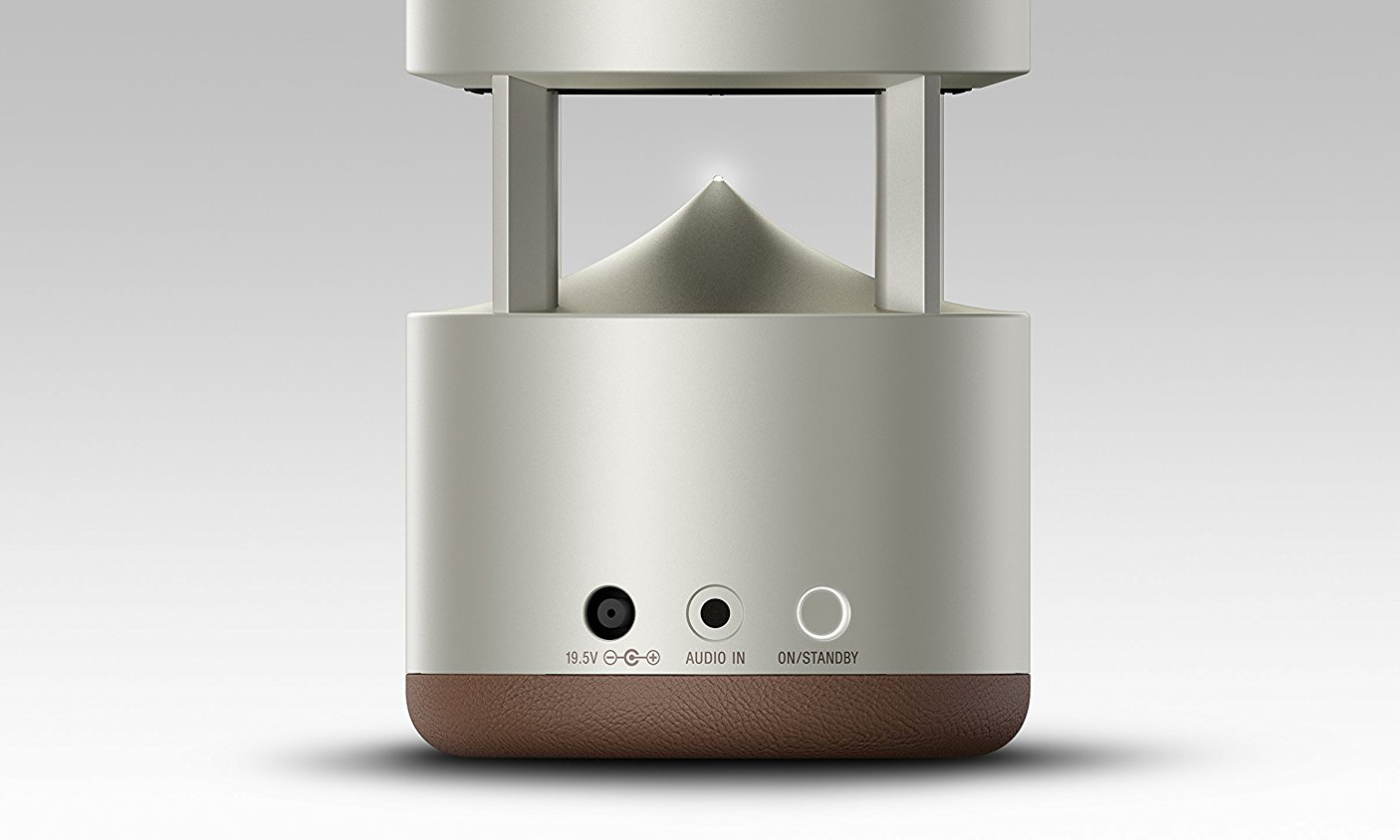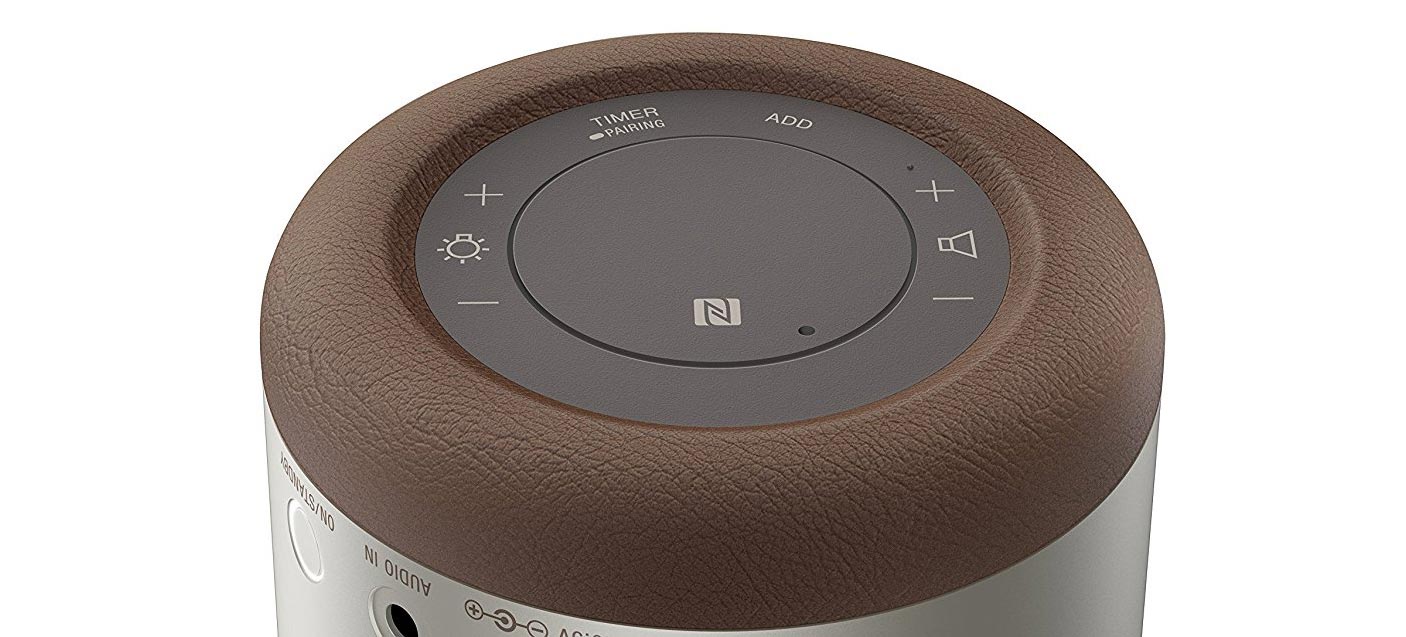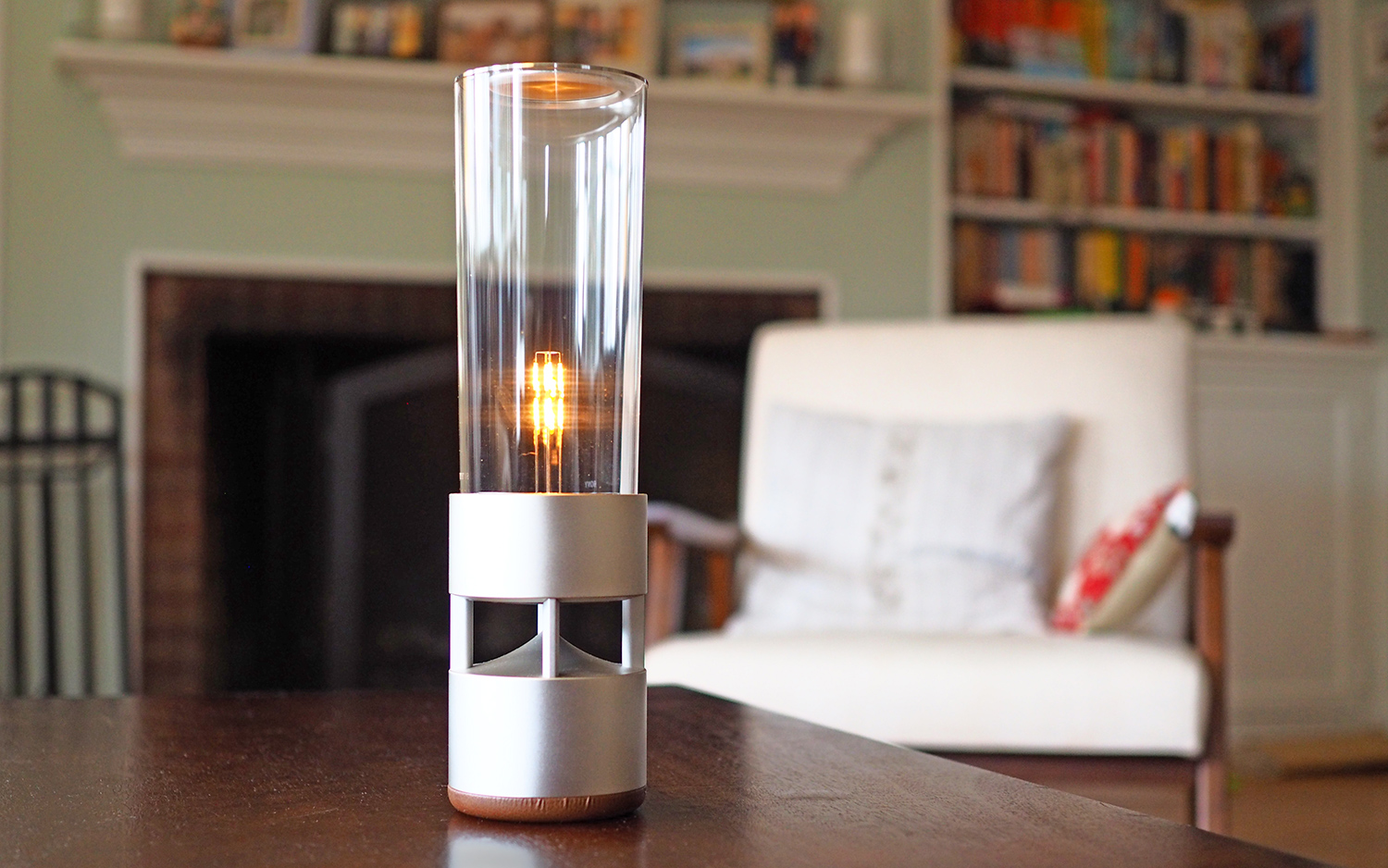Tom's Guide Verdict
The Sony LSPX-S1 is a stylish Bluetooth speaker/LED light combo, but you're better off with a smart speaker (or several) for this kind of money.
Pros
- +
Looks cool
- +
Has built-in light
- +
Battery life is good
Cons
- -
Very expensive
- -
No smart assistant
- -
Doesn't sound as good as less-expensive speakers
Why you can trust Tom's Guide
Elton John implored us to "shine the light," but I don't think he meant it as literally as this. Sony's LSPX-S1 Bluetooth speaker not only lets you rock out to "Philadelphia Freedom," but its built-in LEDs can also illuminate your room as you listen to "Rocket Man." It looks good, too. But, at $800, you'd have to be as wealthy as a pop star to justify its price.
Design
Looking for a Bluetooth speaker that can also double as a candle? Sony has you covered. The LSPX-S1 is a speaker and a bulb in a package that's sure to start conversations. One colleague remarked that it looked like a supersized vacuum tube.

Measuring roughly 12 inches tall and 3.25 inches in diameter, Sony's speaker is about the same width as the UE Megaboom but a few inches taller. The base of the Sony speaker is made of a solid piece of aluminum that's split in two; the halves are connected by four pillars.

A clear, organic glass cylinder makes up the upper two-thirds of the speaker, and inside are eight LEDs that look like the filaments from some sort of futuristic Edison bulb. But this upper section serves a second purpose: It works as a resonance chamber to help the speaker produce higher frequencies more clearly; the top of the cylinder has a rubber diaphragm that vibrates.

Brown leather rings the bottom of the speaker, giving it an even more luxe feel — and it won't stain your furniture like some other speakers do. If you want to change the brightness of the LEDs or the volume without using your smartphone, you have to lift up the speaker and press buttons on its underside. Inconvenient!
Audio Quality
I was pleasantly surprised by the sound quality of music played from the LSPX-S1. Then again, for $800, it'd better sound good. This speaker excelled at jazz. I could picture Thelonious Monk's fingers gliding over the keys in "'Round Midnight." Miles Davis' trumpet was sweet and crisp in "Blue in Green," and the bass line came through cleanly and resonated. The LSPX-S1 benefits from being placed on a hard surface, as bass resonates much better, giving it a deep, warm feel.

However, the LSPX-S1 simply can't compete with larger speakers such as the Sonos One or the UE Megaboom. When I streamed "Don't Let me Be Misunderstood" by Santa Esmeralda from Spotify, both the Megaboom and the Sonos One delivered much more powerful bass and fuller sound overall than the Sony speaker.
Similarly, the bass line was much less prominent on Genesis' "Invisible Touch," which made midrange synthesizer stand out less. Fortunately, Peter Gabriel's vocals came through clearly.
I was pleasantly surprised by the sound quality of the music played c from the LSPX-S1. Then again, for $800, it'd better sound good.
Not surprisingly, the LSPX-S1 can't get as loud as the Megaboom or the Sonos One. Instead of using it to power a party, I could see it being used to provide some background music while you and your friends are playing a board game by a fireplace.
MORE: Best Bluetooth Speakers for Home or On-the-Go
You can pair two LSPX-S1 speakers together — a $1,600 proposition — for stereo sound, but Ultimate Ears lets you link a virtually limitless number of its Megaboom speakers together.
App
Sony's Music Center app, which you use to control the speaker, isn't great. The app's home screen has links for iHeartRadio, Pandora, SoundCloud, Spotify and TuneIn, as well as music stored locally on your smartphone. However, selecting one just takes you to the app for that music service.
Once music is playing, Sony's app lets you control the volume of the speaker, but it doesn't show track names or anything else. If you want to skip to a different song, you have to use the streaming service's app. And there's no way to adjust the equalizer settings. Sonos makes this much easier, letting you do all of this, and more, right from its app.
One thing that's missing from this speaker is any sort of voice assistant; there's no Alexa, no Google Assistant.
Even changing the brightness of the lights through the Sony app is a chore. You have to scroll to the bottom of the home screen, select Settings and then choose the Brightness Control in the next menu that appears. Considering this speaker's other main attribute is its light, this should be easier.
One thing that's missing from this speaker is any sort of voice assistant; there's no Alexa, and no Google Assistant. Although Alexa isn't built into the Megaboom, you can pair it with an Alexa device and then interact with it through the Megaboom.
Battery Life
Sony estimates that the LSPX-S1 will last for up to 4 hours on a charge, but you can get much more than that. I set the brightness of its lights and the volume to 50 percent and started streaming music to it from my iPhone, and it was still going strong after 7 hours. But the Megaboom lasted more than 20 hours on our tests.

When the LSPX-S1's battery is running low, a small light around the speaker's Power/Standby button will start flashing red. To recharge the speaker, you use the small port along its base. But rather than coming with a simple USB cable, the speaker includes a sizable power brick.
Bottom Line
When I carried the Sony LSPX-S1 around at night, I felt like I was in the preindustrial era, carrying a lamp to light my way through a nonelectrified house. Plus, I could listen to my music!
The LSPX-S1 sounds great for its size, but for the $799 the Sony LSPX-S1 costs, you could get four UE Megabooms and still have more than $100 left over. Granted, UE's speakers don't have built-in lights, but they deliver more powerful audio, last more than twice as long, are waterproof and can be paired with a multitude of other speakers, as well as with Alexa. I like the idea of a portable speaker and light in one, but the LSPX-S1 is an expensive novelty.
Credit: Mike Prospero/Tom's Guide

Michael A. Prospero is the U.S. Editor-in-Chief for Tom’s Guide. He oversees all evergreen content and oversees the Homes, Smart Home, and Fitness/Wearables categories for the site. In his spare time, he also tests out the latest drones, electric scooters, and smart home gadgets, such as video doorbells. Before his tenure at Tom's Guide, he was the Reviews Editor for Laptop Magazine, a reporter at Fast Company, the Times of Trenton, and, many eons back, an intern at George magazine. He received his undergraduate degree from Boston College, where he worked on the campus newspaper The Heights, and then attended the Columbia University school of Journalism. When he’s not testing out the latest running watch, electric scooter, or skiing or training for a marathon, he’s probably using the latest sous vide machine, smoker, or pizza oven, to the delight — or chagrin — of his family.
